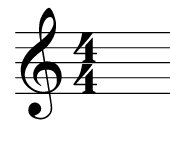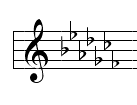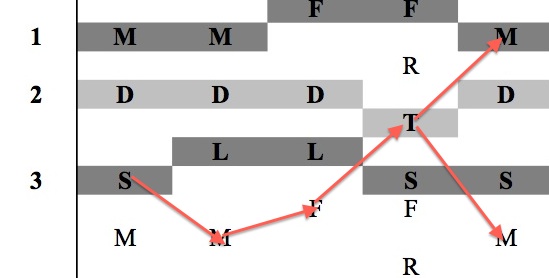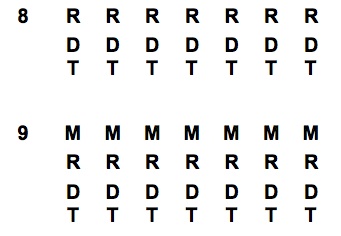Music Theory "Multiplication Tables"
 One thing I disliked about how I was taught music theory during piano lessons and in undergrad was that a lot of it seemed to be busy work. Unfortunately, I came to realize that some of it does need to be "busy work." Some topics need practice to learn and perfect. And to be an adept musician, you should be able to easily identify meter signatures, key signatures, and other basics of our standard notation.
One thing I disliked about how I was taught music theory during piano lessons and in undergrad was that a lot of it seemed to be busy work. Unfortunately, I came to realize that some of it does need to be "busy work." Some topics need practice to learn and perfect. And to be an adept musician, you should be able to easily identify meter signatures, key signatures, and other basics of our standard notation.
It's with this mindset that I used PowerPoint key and meter signature quizzes in my music theory classes. In a way, these are similar to the timed multiplication tables that we did in grade school.
One PowerPoint was set up to include all 15 different key signatures (it works for major and minor keys); one had more key signatures, and an audible tonic chord, to differentiate between major and minor keys. Another was set up to include several different meter signatures.
The slides can be randomized, so they aren't in the same sequence each time you give a quiz. They can also be set on a timer, so students have 5, 10, etc., seconds to name the key or meter. When giving the meter quiz, I would often have the students write out if it was simple or compound meter, as well as if it were duple, triple or quadruple meter. (I usually allowed them time after the PowerPoint was finished to do this, especially if it were on a faster timing cycle.)
This doesn't mesh very well with many current theories of learning and teaching. Some people might say that it's rote learning, or overbearing, or that it doesn't take into account the student enough.
 The truth is, though, that this works. And it's a necessity to identify these elements quickly and easily. As I'm sure you know, if you have to spend a minute figuring out the key and meter signatures to a piece, that's a minute of valuable time lost practicing, studying, etc.
The truth is, though, that this works. And it's a necessity to identify these elements quickly and easily. As I'm sure you know, if you have to spend a minute figuring out the key and meter signatures to a piece, that's a minute of valuable time lost practicing, studying, etc.
Feel free to use these PowerPoints (but please contact me if you use them - I'd love to hear how they work out in your classes!). Please share other ideas about using PowerPoint in your music theory class, or other ways to increase student knowledge and awareness of these ideas!



